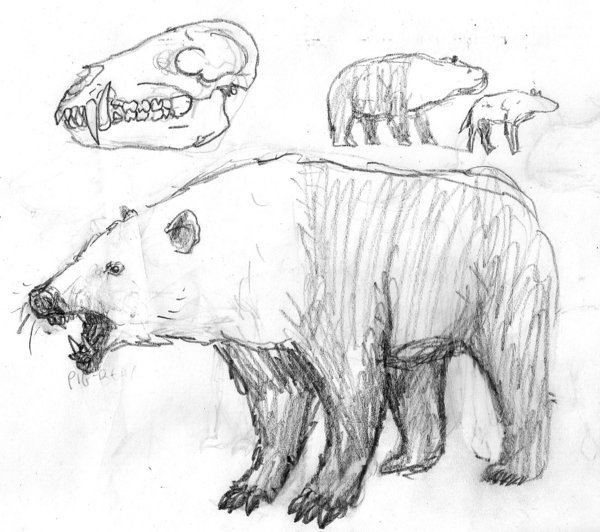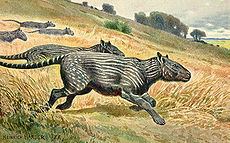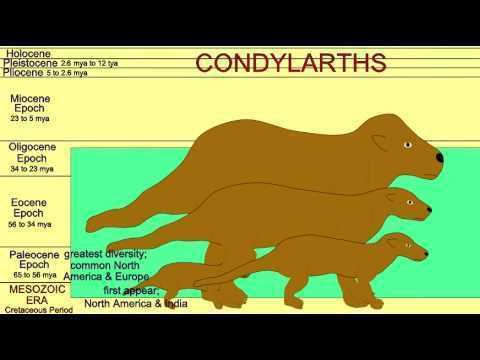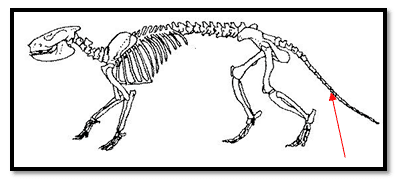Kingdom Animalia Infraclass Eutheria Scientific name Condylarthra Rank Order | Phylum Chordata Superorder Laurasiatheria? Higher classification Mammal | |
 | ||
Similar Mammal, Phenacodus, Creodonta, Litopterna, Mesonychid | ||
Paleocene mammals condylarth introduction
Condylarthra is an informal group – previously considered an order – of extinct placental mammals, known primarily from the Paleocene and Eocene epochs. They are considered early, primitive ungulates. It is now largely considered to be a wastebasket taxon, having served as a dumping ground for classifying ungulates which had not been clearly established as part of either Perissodactyla or Cetartiodactyla, being composed thus of several unrelated lineages.
Contents
- Paleocene mammals condylarth introduction
- Paleocene mammals condylarth groups
- Taxonomic history
- Evolutionary history
- References

Paleocene mammals condylarth groups
Taxonomic history

Condylarthra always was a problematic group. When Condylarthra was first described by Cope 1881, Phenacodontidae was the type and only family therein. Cope 1885, however, raised Condylarthra to an order and included a wide range of diverse placentals with generalized dentitions and postcranial skeletons. More recent researchers (i.e. post-WW2) have been more restrictive; either including only a limited number of taxa, or proposing that the term should be abandoned altogether. Due to their primitive characteristics condylarths have been considered ancestral to several ungulate orders, including the living Artiodactyla, Cetacea, Perissodactyla, Hyracoidea, Sirenia, and Proboscidea, as well as the extinct Desmostylia, Embrithopoda, Liptopterna, Notoungulata, and Astrapotheria.

Prothero, Manning & Fischer 1988 delimited condylarths as those having the following characters, but lacking the specializations present in more derived orders:
Evolutionary history
The disappearance of the dinosaurs opened up an ecological niche for large mammalian herbivores. Some condylarths evolved to fill the niche, while others remained insectivorous. This may explain, in part, the tremendous evolutionary radiation of the condylarths that we can observe throughout the Paleocene, resulting in the different groups of ungulates (or "hoofed mammals") that form the dominant herbivores in most Cenozoic animal communities on land, except on the island continent of Australia.
Among recent mammals, Paenungulata (hyraxes, elephants, and sea cows), Perissodactyla (horses, rhinoceroses, and tapirs), Artiodactyla (pigs, deer, antelope, cows, camels, hippos, and their relatives), Cetacea (whales), and Tubulidentata (aardvarks) are traditionally regarded as members of the Ungulata. Besides these, several extinct animals also belong to this group, especially the endemic South American orders of ungulates, (Meridiungulata). Although many ungulates have hoofs, this feature does not define the Ungulata. Indeed, some condylarths had small hoofs on their feet, but the most primitive forms are clawed.
Recent molecular and DNA research has reorganised the picture of mammalian evolution. Paenungulates and tubulidentates are seen as afrotherians, and no longer seen as closely related to the laurasiatherian perissodactyls, artiodactyls, and cetaceans, implying that hooves were acquired independently (i.e. were analogous) by at least two different mammalian lineages, once in the Afrotheria and once in the Laurasiatheria. Condylarthra itself, therefore, is polyphyletic: the several condylarth groups are not closely related to each other at all. Indeed, Condylarthra is sometimes regarded as a 'wastebasket' taxon. True relationships remain in many cases unresolved.
In addition to meridiungulates and living ungulates, a condylarthran ancestry has been proposed for several other extinct groups of mammals, including Mesonychia and Dinocerata.
